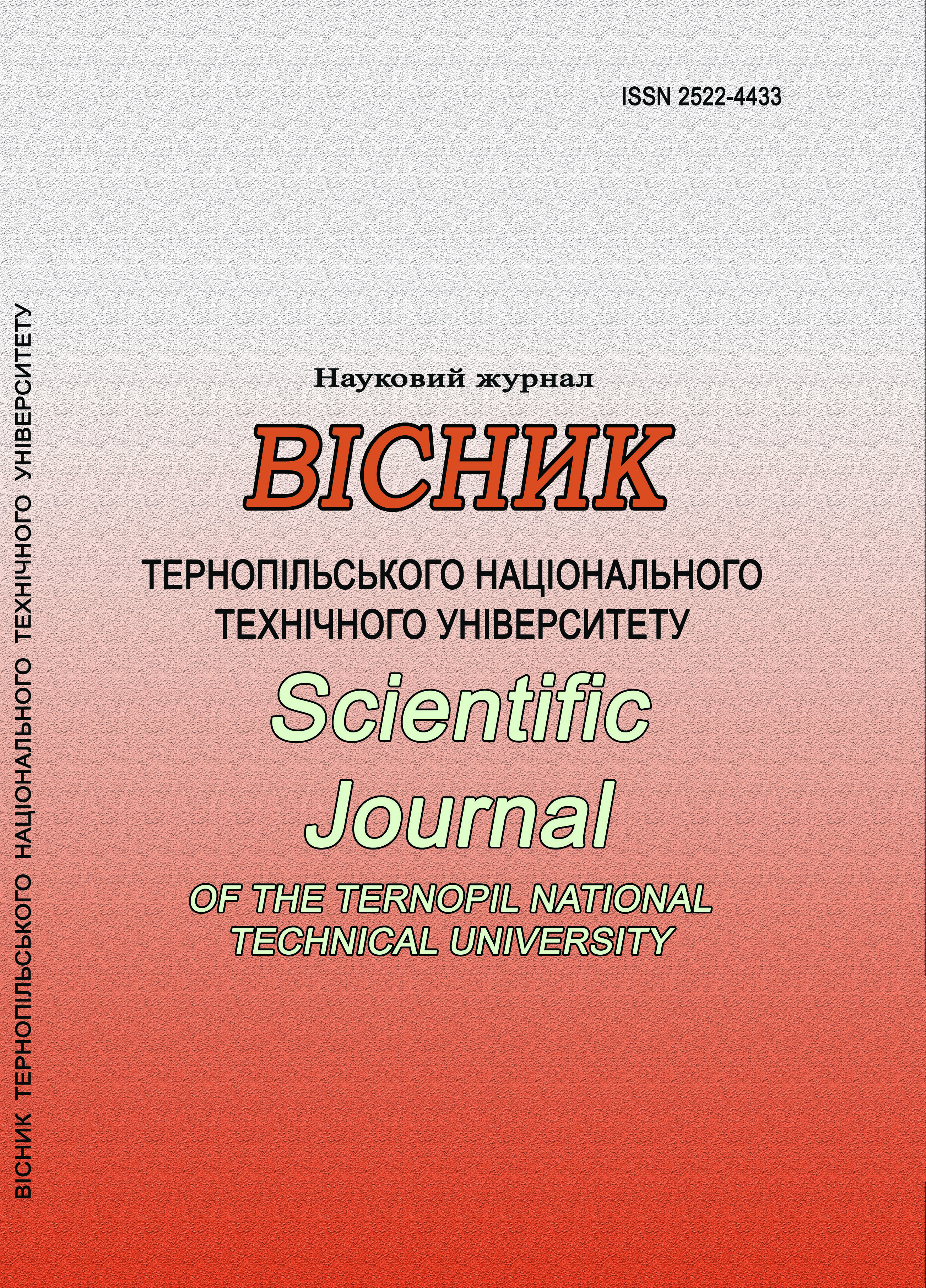Correspondence analysis for detecting risk factors for criminal recidivism
Main Article Content
Abstract
Correspondence analysis was used in the work to identify associations between criminal recidivism and the following elements of criminal histories of criminals: sex, age at the time of the first conviction to the actual degree of punishment, age at the time of the first conviction to the suspended or actual sentence, educational level, type of employment at the time of conviction, availability of early releases, availability of suspended sentences, availability of motivation for the release. The conducted empirical analysis made it possible to draw conclusions about the existence of a direct relationship between the risk of criminal recidivism with the age at the time of the first conviction to the suspended and/or actual sentence, the level of education obtained, the type of employment, the presence of early releases, previous conditional convictions and the lack of correlation between the fact of committing repeated criminal offenses and the gender and motivation of the convicts for release.
Article Details
Issue
Section

This work is licensed under a Creative Commons Attribution 4.0 International License.
References
1. Volkov S., Prokopenko A., Asabashvili S., Volkov K. Some aspects of autonomous cyber-physical systems diagnostics by their qualitative state. Scientific Journal of TNTU. 2022. Vol. 108. No. 4. P. 122–130. https://doi.org/10.33108/visnyk_tntu2022.04.122
2. Kulyna S. Evaluation of the reverse transformation methods complexity of the residual numbersystem for secure data storage. Scientific Journal of TNTU. 2022. Vol. 107. No. 3. P. 21–28. https://doi.org/10.33108/visnyk_tntu2022.03.021
3. Hladiy G., Khoma N., Zakaliak R., Mohylska M. Website dependability evaluation model basedon a multi-criteria approach. Scientific Journal of TNTU. 2022. Vol. 107. No. 3. P. 105–114. https://doi.org/10.33108/visnyk_tntu2022.03.105
4. Stadnyk M., Palamar A. Project management features in the cybersecurity area. Scientific Journal of TNTU.2022. Vol. 106. No. 2. P. 54–62. https://doi.org/10.33108/visnyk_tntu2022.02.054
5. Prus R., Yatsyuk S., Hlynchuk L., Mulyar V. Economic aspects of information protection underpresent large-scale cyber-attacks conditions. Scientific Journal of TNTU. 2022. Vol. 106. No. 2. P. 63–74.https://doi.org/10.33108/visnyk_tntu2022.02.063
6. Kovalchuk O., Kasianchuk M., Karpinski M., Shevchuk R. Decision-Making Supporting Models Concerning the Internal Security of the State. INTL Journal of Electronics Telecommunications. 2023.Vol. 96. No. 2. P. 301–307. URL: https://doi.org/10.24425/ijet.2023.144365.
7. Yu R., Langstrom N., Forsman M., Sjolander A., Fazel S., Molero Y. Associations between prisons and recidivism: A nationwide longitudinal study. National Center for Biotechnology Information. PLoS ONE, 2022, 17, e0267941. https://doi.org/10.1371/journal.pone.0267941
8. Berezka K. M., Kovalchuk O. Ya., Banakh S. V., Zlyvko S. V., Hrechaniuk R. A Binary Logistic Regression Model for Support Decision Making in Criminal Justice. Folia Oeconomica Stetinensia. 2022.Vol. 22. No. 1. P. 1–17. https://doi.org/10.2478/foli-2022-0001
9. Yukhnenko D., Blackwood N., Fazel S. Risk factors for recidivism in individuals receiving community sentences: A systematic review and meta-analysis. CNS Spectrums. 2020. Vol. 25. No. 2. P. 252–263. https://doi.org/10.1017/S1092852919001056
10. Associative Rule Mining for the Assessment of the Risk of Recidivism, 4th International Workshop “Intelligent Information Technologies & Systems of Information Security”. Khmelnytskyi, Ukraine, 2023, 3373, pp. 376–387. https://ceur-ws.org/Vol-3373/paper24.pdf.
11.Jacobs L. A., Fixler A., Labrum T., Givens A., Newhill C. Risk Factors for Criminal Recidivism Among Persons With Serious Psychiatric Diagnoses: Disentangling What Matters for Whom. Front Psychiatry.2021. Vol. 12. 778399. https://doi.org/10.3389/fpsyt.2021.778399
12.Cuevas C., Wolff K. T., Baglivio M. T. Dynamic risk factors and timing of recidivism foryouth in residential placement. Journal of Criminal Justice. 2019. Vol. 60. Р. 154–166. https://doi.org/10.1016/j.jcrimjus.2018.10.003
13. Garritsen K., Jankoviс M., Masthoff E., Caluwé E.D., Bogaerts S. The Role of Dynamic Risk and Protective Factors in Predicting Violent Recidivism: Intellectual Ability as a Possible Moderator?International Journal of Offender Therapy and Comparative Criminology, 2022, 52271. https://doi.org/10.21428/cb6ab371.72aac051
14. Navarro-Pérez J.-J., Viera M., Calero J., Tomas J. M. Factors in Assessing Recidivism Risk in Young Offenders. Sustainability. 2020. Vol. 12. No. 3. 1111. https://doi.org/10.3390/su12031111
15. Heffernan R., Ward T. Dynamic Risk Factors, Protective Factors and Value-Laden Practices. Psychiatry, Psychology and Law. 2019. Vol. 26. No. 2. https://doi.org/10.1080/13218719.2018.1506721
16. Saravanan P., Selvaprabu J., Raj L. A., Khan A., Sathick K. Survey on crime analysis and prediction using data mining and machine learning techniques. Lect. Notes Electr. Eng. 2021. Vol. 688. P. 435–448.https://doi.org/10.1007/978-981-15-7241-8_31
17.Riani M., Atkinson A. C., Torti F., Corbellini A. Robust Correspondence Analysis. Journalof the Royal Statistical Society Series C: Applied Statistics. 2022. Vol. 71. No. 5. P. 1381–1401.https://doi.org/10.1111/rssc.12580
18. Unified register of pre-trial investigations. URL: https://erdr.gp.gov.ua. (accessed: 13.03.2023) [In Ukrainian].
19. Kovalchuk O., Karpinski M., Banakh S., Kasianchuk M., Shevchuk R., Zagorodna N. Prediction Machine Learning Models on Propensity Convicts to Criminal Recidivism. Information. 2023. Vol. 14. No. 3. P. 161. https://doi.org/10.3390/info14030161
20. Kovalchuk O. Modeling the risks of the confession process of the accused of criminal offenses based on survival concept. Scientific Journal of TNTU. 2022. Vol. 108. No. 4. P. 27–37. https://doi.org/10.33108/visnyk_tntu2022.04.027

